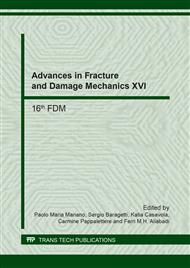p.295
p.299
p.303
p.309
p.313
p.317
p.321
p.325
p.329
Modelling of Closed Steel Supports for Underground and Mining Works
Abstract:
The closed steel supports of different shapes are used in mining and underground constructions. The yielding and unyielding supports are prefabricated from rolled, usually robust steel profiles. The load carrying capacity of the support is considerably influenced by the active loading and passive forces. The passive forces are induced by the interactions of support with the surrounding rock massif [1]. The user-friendly software was processed for the operational determination of load carrying capacity. The analysis has three parts: the first part consists of the structural geometry processing. The second part includes the numerical solution of statically indeterminate structure for the specified load. The third part is the calculation of load carrying capacity, components of internal forces and deformations. The force method and the numerical integration were used for solution. The Winkler model is applied when the support is in interaction with the surrounding environment. The load carrying capacity of support is limited by the slip resistance of the connected parts and reaching the ultimate state of the profile. The plasticity calculation is performed in accordance with EN 1993-1-1 Ed. 2. The limit values beyond the scope of this standard can be selected for an alternative computation.
Info:
Periodical:
Pages:
313-316
Citation:
Online since:
September 2017
Authors:
Price:
Сopyright:
© 2017 Trans Tech Publications Ltd. All Rights Reserved
Share:
Citation:


